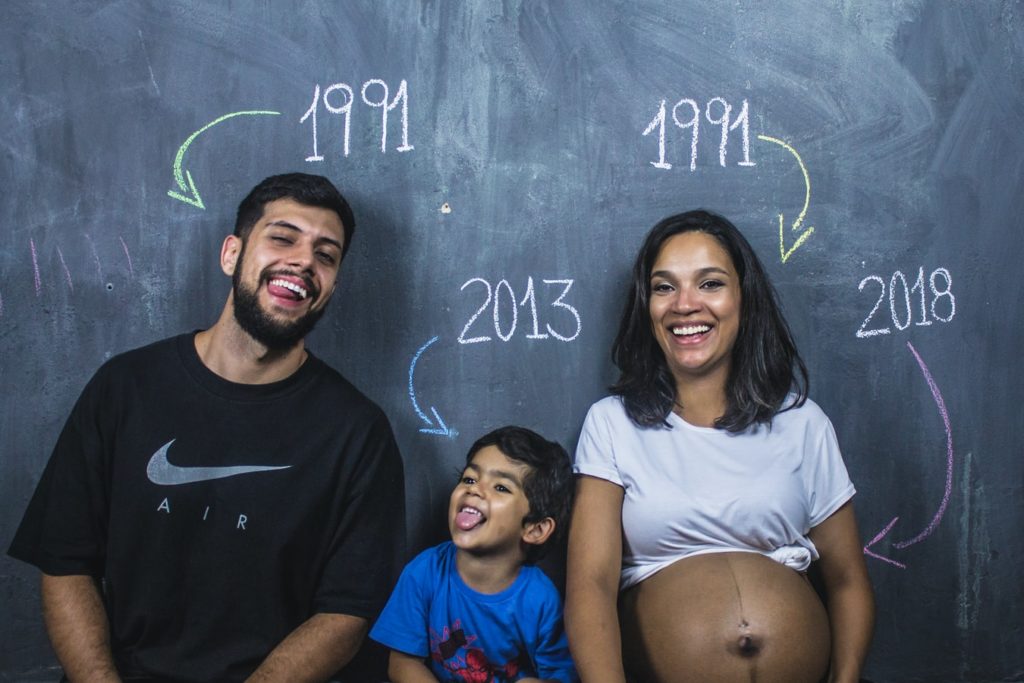Families are the foundation of every society on earth. Babies expand and continue the family line, drawing couples closer together and shining a bright light on the future.

Only photography can capture and preserve a family’s precious moments in time. Yes, people snap away with the cameras on their smartphones all the time, but skilled portrait photographers are still in high demand for families who want a formal document of their milestones.
Anyone with a camera and demonstrable skill can pursue a career as a family/baby photographer. There are no special licenses or government requirements, although practice and independent training is valuable to develop your talent quickly so you can produce steadily better work, gaining more clients along the way.
Family/baby photographers essentially follow one of two career paths: either working as a salaried employee of a portrait studio or as a freelance portrait photographer who is self-employed. The latter route will usually lead to greater income, although the burden is on you to buy and maintain your own equipment, carry business insurance and handle all the marketing and promotion. But with that also comes the freedom to set your own hours and work a schedule that best suits your lifestyle.
Good people skills and the ability to communicate in a friendly but persuasive manner are essential skills to go along with your mastery of photography. Patience will also be a valuable trait on the days when young children refuse to sit still or the adorable baby who arrived cooing in his car seat is now crying inconsolably as you set the lighting for the photograph. This comes with the job. The joy of helping people preserve their legacies and loved ones in photographs is also part of the portrait photographer’s work. It is also arguably the greatest, most satisfying aspect of the art and craft of family/baby photography.
Read on to learn how you can get started as a family/baby photographer.
In this article you’ll learn:
- How much money you can make as a family photographer
- The required training and certifications
- Professional groups to join
- Employment opportunities for family photographers
- Finding clients
- Plus helpful tips
How much money can you make?
A portrait photographer on average makes $30,367 annually, according to a recent GlassDoor survey. Photographers on the high end of this specialty make $45,000 annually and up. These are individuals employed mainly by large portrait studio chains.

There’s less competition today than in years gone by when major retail stores often had an on-site portrait studio where special pricing on photo packages was routine. With the near-collapse of brick & mortar retailing, there are fewer of these retail-chain portrait studios that could offer rock-bottom pricing due to their size, marketing budgets and buying power, in terms of photographic supplies.
Today determined freelance photographers focused on family and baby portraits can make as much money as they wish, depending on their willingness to put in the hours it takes to market and run a business.
Training and Certification
You don’t need a license or certification to go out with your camera today, right now, and offer your services as a family/baby photographer, but some training is probably a good idea. Beyond talent with a camera, good people skills are necessary to get subjects to cooperate for the photo shoot. This is especially true of little children who may not be inclined to take direction, and babies, who definitely won’t.

There are dozens of online portrait photography training programs for you to pull up with a simple Internet search and review. Most are well under $100. Here’s an example. These courses teach good composition, how to light a scene, getting your subjects to pose, working safely with babies, creating inexpensive photo sets, basic image post-production skills and more.
To learn more about your clientele and how to manage them for best results, consider reading a few books on infant development, child psychology, family dynamics and so forth. This can enhance your people skills and help you develop strategies for getting the perfect portrait as timely and efficiently as possible – so you can move on to working with the next client.
Professional Groups to Join
There are many professional photographers’ organizations you can join to network with other pros and advance your portrait photography career. Here are two of the most relevant:
American Photographic Artists offers “inspiration, education and advocacy” with local chapters throughout the United States you can join for networking. They also hold regular events and photography competitions. There are several membership tiers ranging from $60 to $500 per year, each with different benefits. All memberships include a photo ID card and a listing on the member directory, which can help new clients find you when they search by city and state. The more expensive membership levels provide access to insurance, discounts on equipment, ongoing education opportunities and more.

Professional Photographers of America is the premiere organization of photography pros in the United States. A full membership is open to anyone living in the United States or its territories and costs $323 per year. Benefits include:
- $15,000 equipment insurance policy
- Data loss protection
- Access to all online education courses
- Online referral database listing
- Printed and digital monthly issues of Professional Photographer magazine
- One full registration to Imaging USA during the first year of membership
- Business Resources
- Contracts and Copyright Resources
- Access to Member Discount Program
- Weekly newsletter
Employment
Contact portrait studios, churches and other places of worship, local clubs, the PTA and civic groups, letting them know of your services. Send them your marketing materials, brochures and business cards. Follow up with a phone call in a day or two.

Don’t be discouraged by rejection when calling potential clients. The very next call you make could be gold.
Use the networking power of your professional memberships to find assignments.
Finding Clients
Business cards and a basic website should be the core of your marketing toolkit as a freelance photographer. The website need not be fancy or expensive, just attractively designed, with photos of your best work, your business location and contact information. No need to include your pricing. You can discuss that directly with your clients. You want to sell customers based on the quality of your work, not the price you charge. To do that, you’ll need to meet with them in person.
In addition to your business website, the next thing to do is create an Instagram account to showcase your photography. Instagram is the #1 online venue for creative professionals to display their work. It’s a free promotional tool that’s always working on your behalf.
Other strategies for attracting new business:
- Create a referral program with discounts for returning customers who bring new clients to you.
- Ask clients to review your services online. According to a recent survey, 90% of people say their buying decisions are influenced by positive online reviews.

Good to know
A few thoughts on equipment.
There are dozens of books, websites and photography magazines available to help you decide which gear to buy when you’re starting out as a portrait photographer of families and babies. Your needs may be different from another portrait photographer’s, so only you can decide which brand or model of camera suits your requirements and budget.
At minimum, though, you’ll need a DSLR (digital single lens reflex) camera body and at least two lenses, wide and telephoto. Two camera bodies are even better because then you won’t be spending so much of your time switching out lenses while the subjects of your portrait grow impatient.
A set of neutral density and polarizing filters will help you manage lighting conditions outdoors. Indoors, you’ll need a flash attachment at minimum. Over time, you may decide to invest in a lighting kit with reflectors, lamps and folding stands, all of which fits into a footlocker-type case for easy transport.
Spare camera batteries and memory cards are essential. And you’ll need a water-resistant bag to carry your equipment when you go on location. Some families may want their portrait taken at home or perhaps in some natural setting like a park. You’ll need an efficient way to transport your gear on these occasions.
A good, sturdy tripod should also be part of your standard kit. To get the maximum stabilizing benefits from a tripod, you should have some means of triggering the camera shutter remotely. Many modern digital cameras are Bluetooth enabled, which allows a radio signal to pass from the camera to a smartphone. Depending on the brand and model of your camera, you download an app to the phone, which allows you to trigger the camera shutter with your smartphone from distances of up to about 30 feet. This is especially helpful when photographing babies because you can step out from behind the camera to move closer to the child while you manipulate a squeaky toy in one hand to capture the baby’s attention while activating your camera shutter with your other hand holding a smartphone.

Finally, a computer or laptop loaded with image editing software such as Photoshop will be needed to work on your photographs in post-production. As your photography business grows, digital storage will become an issue. There are many online storage solutions (cloud storage), some of them even free for a certain volume of storage. Google Drive is one example. As a backup measure, though, you may want to invest in external hard drives that can store many thousands of high-definition images. These drives connect directly with a cable to your laptop or computer for immediate access. One advantage of an external drive is you do not need an Internet connection to access your work.
If you enjoyed this article, check out some more great PocketSuite.io content that can help you grow your career as a family photographer. Here’s a great place to start.PocketSuite has thousands of business owners who all started where you are right now. Our community is always happy to help you ramp up, grow your client base, and achieve your income goals, both within the PocketSuite app and as part of our exclusive Facebook Community Group. PocketSuite’s vision is for any professional to be able to work for themselves and make a great living. It starts here. It starts with you. It starts today. Let’s get started, download PocketSuite now! Feel free to reach out with any questions (we’d love to hear from you)! Text us @ (415) 841-2300.





